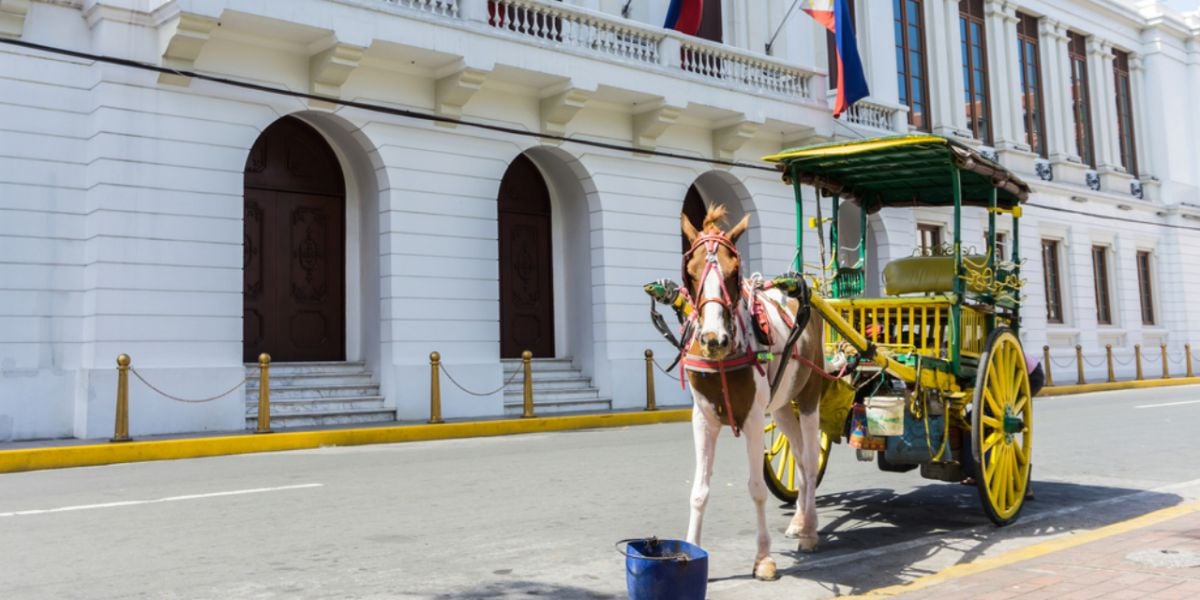
Right after touching down at the airport, the first thing the new expat may notice is the wide variety of transportation in the Philippines, ranging from trains, buses, jeeps, taxis, tricycles, and a lot more. At first, you might feel overwhelmed; however, these are somewhat very common in this country. This article will help you be familiarized with the most common mode of transportation in Manila and the Philippines as a whole.
Buses are a common mode of transportation in Manila, with both city buses and provincial buses traveling to and from various destinations within and outside the metro. Various programs and initiatives have been implemented by the DOTr to improve the quality of bus services, such as the Rationalization Program. The Busway System and New Buses have been implemented for upgrade and are also initiatives.
Bus tickets can be purchased at the bus stations- one way only. An ordinary bus ticket is p10 for the first 5 km, increasing incrementally by p1.75 per additional kilometer beyond that.
The railway system in Manila
There are currently only 2 operational rail transits in Metro Manila. The first one is LRT1, and the second is MRT2. However, the national government has already commenced an ongoing construction of a subway system that is expected to be completed in 2025 and will be fully operational by 2028. You may view the latest updates regarding the LRT and MRT schedule via the local media, such as Escape Manila.
The best and easiest way to pay is through the beep card, which costs 200 pesos and has a balance of 70 pesos. You can reload it by going to beep card booths or MRT booths with any amount you wish, depending on your frequency and distance of journeys. Alternatively, you can buy a one-way ticket which is commonly used by most commuters in Manila, starting from p30 upwards.
Taxis in Manila
Taxi services are available in Manila, but they have had mixed reviews among passengers regarding reliability, safety, and fair pricing. While there are many reputable taxi companies, there are also reports of overcharging, detours, reckless driving, and fraudulent schemes.
Important:
Make sure the driver turns on the meter before taking off on the trip.
To address these issues, the Philippine government has implemented various regulatory measures to improve the taxi service in Manila. For example, the Department of Transportation requires taxi drivers to undergo road safety seminars and passenger sensitivity training, and all taxis must have a GPS tracking system and emergency response button. Taxi drivers are also required to display a fare matrix, contact number, and taxi ID number for transparency and accountability purposes.
Grab is the most common taxi service provider in the Philippines and works by booking on the app. Aside from the P45 booking fee, Grab imposes P2 per minute plus P15 per kilometer, then doubles this during traffic.
Car rental in Manila
Car rental in Metro Manila is a popular and convenient way for residents and visitors to get around and explore the city and its surrounding areas. Several car rental companies are operating in Manila, offering a wide range of vehicle types and rental options, including daily, weekly, or monthly. Some rental car companies are located within the airport terminal, and some can be located through online booking or transportation apps. Rent Car Manila, Kayak and Anis Transport are three popular car rental websites in Manila.
While renting a car in Manila can offer freedom and convenience for travelers, it's important to take into consideration road conditions and heavy traffic congestion, particularly during peak hours.
Jeepneys in Manila
Jeepneys are an iconic mode of transportation in Manila and throughout the Philippines, originating from World War II-era military jeeps that were left behind by American forces. They are a cheap and convenient way of transportation for many people in Metro Manila, especially those from low-income groups.
Jeepneys operate on fixed routes and can be flagged down along the street or at designated stops/stations. Please do remember that you may need to say “para” or “para po” in order for them to know that you would like to get off the jeep. Passengers pay the fare upon boarding, and there is no set schedule, meaning they will leave only when a reasonable number of passengers occupy the seats. Jeepneys are a very inexpensive way of getting around compared to Western cities.
While Jeepneys are an excellent mode of transportation for regular commuters, there have been challenges in recent years. The jeepney fleet is quite old; the vast majority of Jeepneys currently in operation are poorly maintained and don't meet modern vehicle air quality standards, maintenance issues, and pollution that impact air quality affecting both drivers and commuters.
Motorcycle-hailing services in Manila
The motorcycle-hailing service in Manila is becoming increasingly popular, providing a fast and efficient mode of transportation for locals and tourists. Commonly known as "habal-habal" or "angkas," these motorcycle taxis can weave through the heavy traffic and packed streets of Manila much faster than cars or other vehicles. However, motorcycle-hailing services in Manila are not without risks. Concerns regarding safety have been raised as motorcycle accidents are more frequent on the roads of Metro Manila. It's always advisable to wear a helmet to enhance safety while using this transportation method.
With training and proper measures, the motorcycle-hailing service in Manila provides an affordable and efficient way of commuting, particularly for short distances and heavy traffic areas. Always agree on a price in advance. Motorcycles are inexpensive, and depending on the trip and with an agreed price, it is recommended.
Transportation in Manila can be complex and challenging due to factors such as heavy traffic, overcapacity, issues with road conditions, and at times, safety concerns. However, improvements have been made in recent years through the implementation of modern transportation modes and innovative solutions that aim to make transportation more efficient, reliable, and safe.
We do our best to provide accurate and up to date information. However, if you have noticed any inaccuracies in this article, please let us know in the comments section below.








